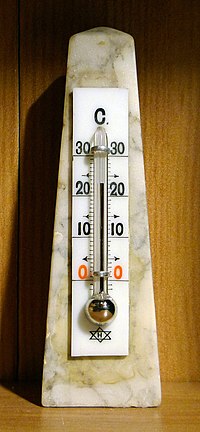
Photo from wikipedia
Clothing is one of the main influencing factors for personal ultraviolet radiation (UVR) exposure. Despite that, little attention was put on this topic till now. In this study, the clothing… Click to show full abstract
Clothing is one of the main influencing factors for personal ultraviolet radiation (UVR) exposure. Despite that, little attention was put on this topic till now. In this study, the clothing habits of young females have been investigated in dependence of meteorological conditions. Observations were made from spring to autumn during daylight in the urban region of Vienna, Austria. For this, a scheme dividing the body into six different sections was developed as well as a coding scale that corresponds to the different garments and indicates the body sites that are exposed. It was found that air temperature is the dominating factor for exposure. With increasing temperature, the first area of the body to be exposed to solar UVR is, aside from face and hands, the décolleté, followed by nape, ankles, instep and forearms. Observations further indicate that the frequency of people's being outdoors decreases significantly at temperatures higher than 30°C. This paper provides detailed frequency distributions of uncovered body sites in dependence of temperature. These can be used together with measurements of temperature and UVR to calculate the relative exposure at any time and at many locations, and could help to explain the body distribution of UVR caused skin alterations.
Journal Title: Photochemistry and Photobiology
Year Published: 2019
Link to full text (if available)
Share on Social Media: Sign Up to like & get
recommendations!